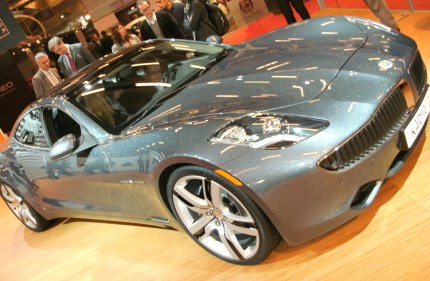
That will put Germany in a neck-and-neck race with the United States to deploy as many electric cars as possible. The U.S. government has promoted electric cars stateside by offering tax credits to electric car buyers to bring the price of electric cars down and make them more appealing to mainstream car buyers. The Nissan Leaf, which costs $32,780 before government tax credits, is one of the cheapest electric vehicles but still carries a rather daunting price tag. It will be another A/B test to see which government investment strategy — the U.S.’s or Germany’s — is better for making electric cars more readily available to everyday consumers.
[aditude-amp id="flyingcarpet" targeting='{"env":"staging","page_type":"article","post_id":259855,"post_type":"story","post_chan":"none","tags":null,"ai":false,"category":"none","all_categories":"business,enterprise,","session":"A"}']Global marketing firm JD Power & Associates said that most electric car manufacturers won’t meet their 2020 sales targets because electric cars are overhyped and too expensive. That’s because most electric cars have limited range when compared to hybrid-electric cars and cars that run off internal combustion engines. Nissan’s Leaf, for example, can only travel around 100 miles before it has to recharge. The supercharged Tesla Roadster can travel more than 200 miles, but it has a mammoth price tag that most typical consumers wouldn’t be able to afford — around $110,000 before environmentally-friendly credits.
The United States has also set ambitious goals to get more electric cars on the road. The U.S. government has said it expects more than one million electric cars to be on the road by 2015, which it said the country is on track to meet. Nissan also said it is on track to sell and deliver 20,000 Leaf vehicles to the United States by September this year, even through it has faced a number of production delays such as a 9.0-magnitude earthquake and electrical faults that prevent the car from starting. Pike Research, a clean technology research firm, estimates that U.S. electric vehicle supply in 2015 will be closer to 841,000 cars.
AI Weekly
The must-read newsletter for AI and Big Data industry written by Khari Johnson, Kyle Wiggers, and Seth Colaner.
Included with VentureBeat Insider and VentureBeat VIP memberships.
Germany’s additional government aid could help the country position itself as a haven for renewable energies and clean technology. Germany is already ahead of the United States in terms of investments in solar power. That was fueled by massive demand for residential solar panels and the country’s increasing interest in renewable energy, according to a report by Pew. It also has Google’s attention, since the company invested $5 million in a solar power plant in its first clean technology investment outside of the United States.
VentureBeat's mission is to be a digital town square for technical decision-makers to gain knowledge about transformative enterprise technology and transact. Learn More
